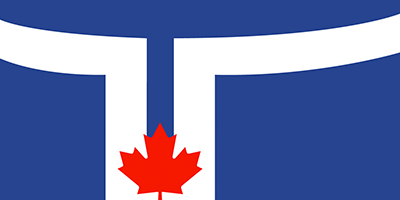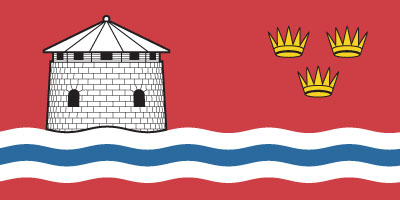Ontario
Origin of the Name
The word Ontario comes from the Iroquois word "kanadario," meaning "sparkling" water. The province is aptly named: lakes and rivers make up one-fifth of its area. In 1641, "Ontario" described the land along the north shore of the easternmost part of the Great Lakes. Later, the southern part of the province was referred to as "Old Ontario." The name "Ontario" was adapted for the new era that began in 1867, when the area became a province.
History
Ontario was first inhabited by the Algonquian and Iroquoian-speaking nations. The most important Algonquian nation in Ontario was the Ojibwa, which lived in northern Ontario. There were two major Iroquoian confederacies: the Iroquois and the Huron. The Five Nations of the Iroquois (Seneca, Oneida, Onondaga, Cayuga and Mohawk) lived near Lake Ontario and Lake Erie. The Huron nation inhabited the area near Lake Simcoe.
These nations were highly developed politically and culturally by the time the Europeans penetrated the area. In 1610, Henry Hudson became the first European to set foot in Ontario. Samuel de Champlain and Étienne Brûlé first established contact with the First Nations of Southern Ontario in 1613.
By 1774, the British controlled what is now Southern Ontario, then part of the Province of Quebec. After the American Revolution, the great influx of Loyalists to this region led to the creation of a new province. The Constitutional Act of 1791, which split the province in two, renamed the area Upper Canada. Although French-Canadians were and remain a significant proportion of Ontario's population, the great influx of Loyalists after the American Revolution helped force the separation.
Accustomed to autonomy in the American colonies, the Loyalists demanded changes to their new homeland. Rebellions against undemocratic government in 1837, in both Upper and Lower Canada, prompted the British to send Lord Durham to report on the troubles.
As a result of Durham's recommendations, the Act of Union of 1840 joined Upper and Lower Canada once again, this time as the Province of Canada. Although a more democratic and responsible government resulted, the union was not a success: Canada East and Canada West continued to be two distinct regions. They entered the confederation conferences of 1864 as though they were separate, and they became different provinces - Ontario and Quebec - at Confederation in 1867.
Ontario is the second largest and the most populous province of Canada. At Confederation, the province was little larger than present-day southern Ontario. Bitter border disputes with Manitoba over the area north of Lake Superior ended in 1889, when it became part of Ontario. The rest of Northern Ontario was annexed in 1912 when Ontario expanded to its current size.








